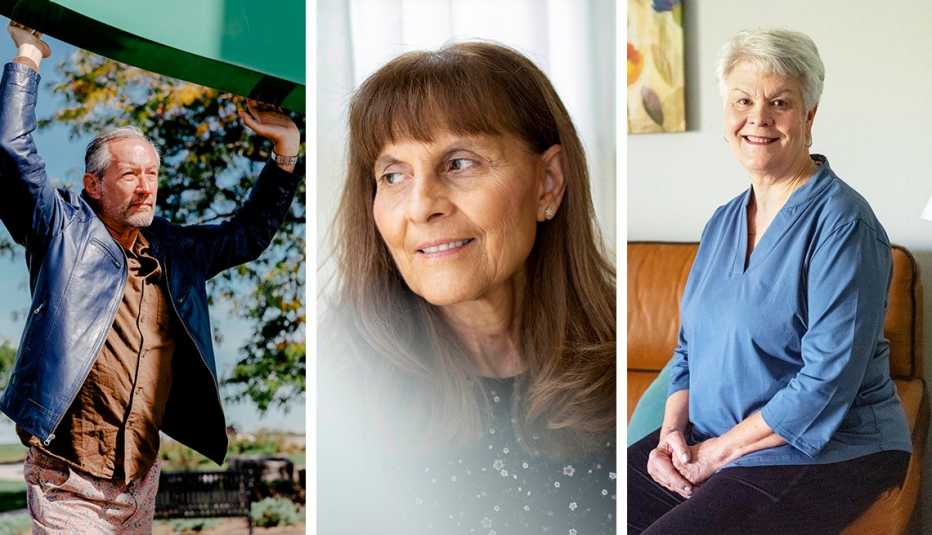AARP Hearing Center


Stacy Davenport says she began to worry about her future just before she turned 60.
“I was flipping out and talked to a friend about why I was anxious about 60,” she says. “If I get sick, I have nobody to take care of me.”
The very next year — in 2018 — two minor strokes “woke me up to I’d better get my stuff in order.”
Davenport, a life coach in Austin, Texas, who is unpartnered and has no children, is among the 33 percent of U.S. women age 65 and older who live alone. Among men of that age group, almost 22 percent do so, according to census data released last year. Often called “solo agers,” they may be widowed, divorced or never married.
Now 68, Davenport says those health scares forced her to act rather than just think about what’s ahead. She named a niece in Florida as her executor and beneficiary, granted her medical power of attorney and added the niece to her bank account.
Davenport says she’s already planned for cremation when the time comes, “so my niece won’t have to worry about that.”
“My friends have families. They’ve got a spouse. They’ve got children,” Davenport says of her friends in Austin and nearby communities. Although they drove her to the grocery or doctor appointments following her strokes, she’s aware of the pitfalls associated with relying on friends who have other obligations.
Davenport says she hasn’t had another stroke or any major health issues.
More solo adults need support
Yet solo agers are a growing group, with more never-married, unpartnered and childless adults in the population. And, because adults with children may effectively be solo if their adult children live far away or they have a child with a disability who can’t care for them, or they are estranged, more aging adults are looking elsewhere for support. Preparing for life’s later stages means tackling issues such as finances and estate planning, and health care and future housing needs, as well as anticipating health decline and creating end-of-life directives. Experts in aging recommend that solo agers who weathered the pandemic’s isolation consider expanding their social circles and making younger friends to allay fears about their fate.
This country’s increasingly diverse population also impacts solo aging.
“Members of the LGBTQ community have a higher frequency of being solo agers and not having children,” says geriatrician Ashwin Kotwal, who is an assistant professor of medicine at the University of California, San Francisco.
He says the prevalence of solo agers appears to be less among Hispanic, Black and Asian communities, which have traditionally relied more on extended family.
“Some of the nonwhite communities are more likely to live in these extended-family households. It’s just a little bit less frequent for solo aging,” he says.
A report from the National Alliance for Caregiving released in November 2021 shows how caregiving experiences differ, with the highest prevalence of caregiving among Black Americans, at more than 28 percent, followed by Hispanics at nearly 22 percent. Prevalence among non-Hispanic whites and Asians is just under 20 percent.


































































More From AARP
These 7 Americans Depend on Social Security
Caregiving, health emergencies, business woes derailed their plans
Caregiver Jacquelyn Joyce Revere’s Journey of Love
@MomOfMyMom creator wants to ‘build the morale’ of caregivers everywhere
How to Pay for a Home-Care Worker
9 financial options to explore including home equity, life insurance and government services